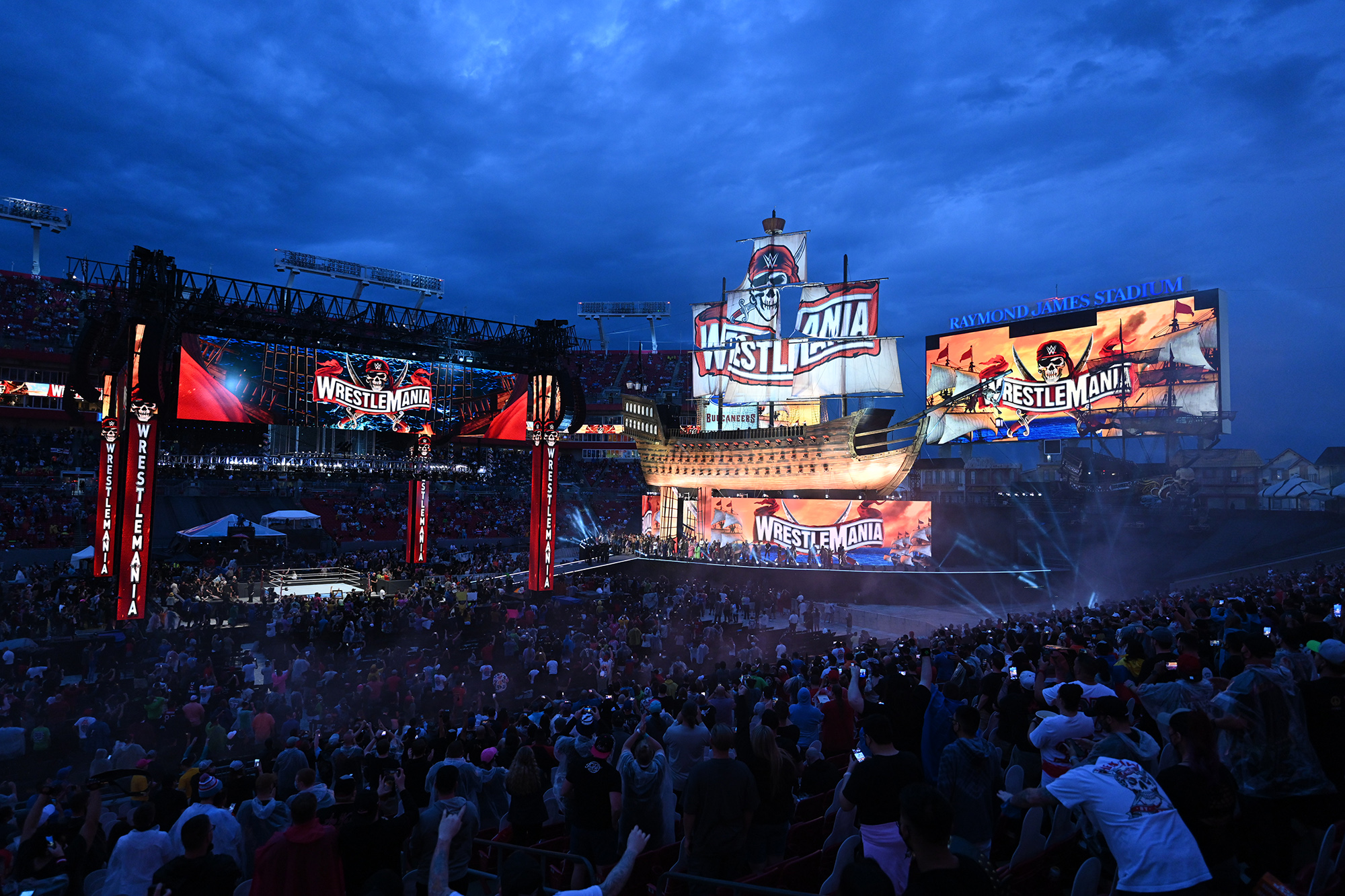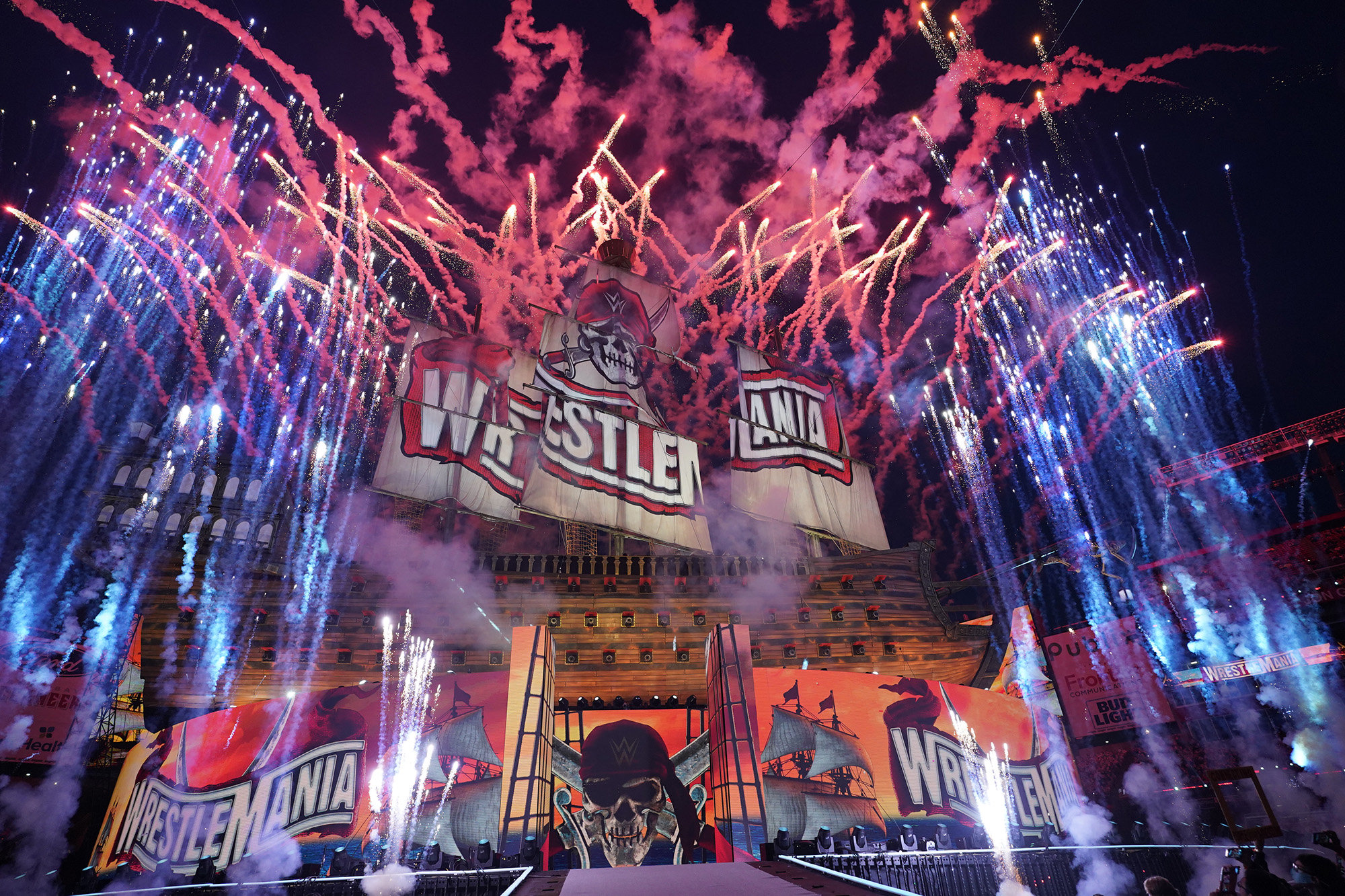WWE Welcomes Back Fans With Colossal WrestleMania Production in Tampa
Upgraded AR presence helps fill in any social-distance gaps
Story Highlights
WrestleMania 37 hosted a total of 51,350 socially distanced fans over two nights at Raymond James Stadium in Tampa over the weekend, marking WWE’s first in-person crowds in more than a year. In true WWE fashion, the production team pulled out all the stops to deliver a bombastic show, enhanced by the addition of augmented reality into the broadcast along with WrestleMania’s signature mix of LED-laden and pyro-fueled staging.
“The fans’ being there had a huge impact on everyone — from the talent to everybody in the truck,” says Duncan Leslie, SVP, event technical operations, WWE. “It was so gratifying to see how excited our fans were, because we do everything we can to give them the best show on earth.”
The two-night event aired on Peacock, the first WrestleMania not to air on the WWE Network since 2013, given the new rights deal with NBCUniversal.
Two Jam-Packed Weeks for WWE Ops Team
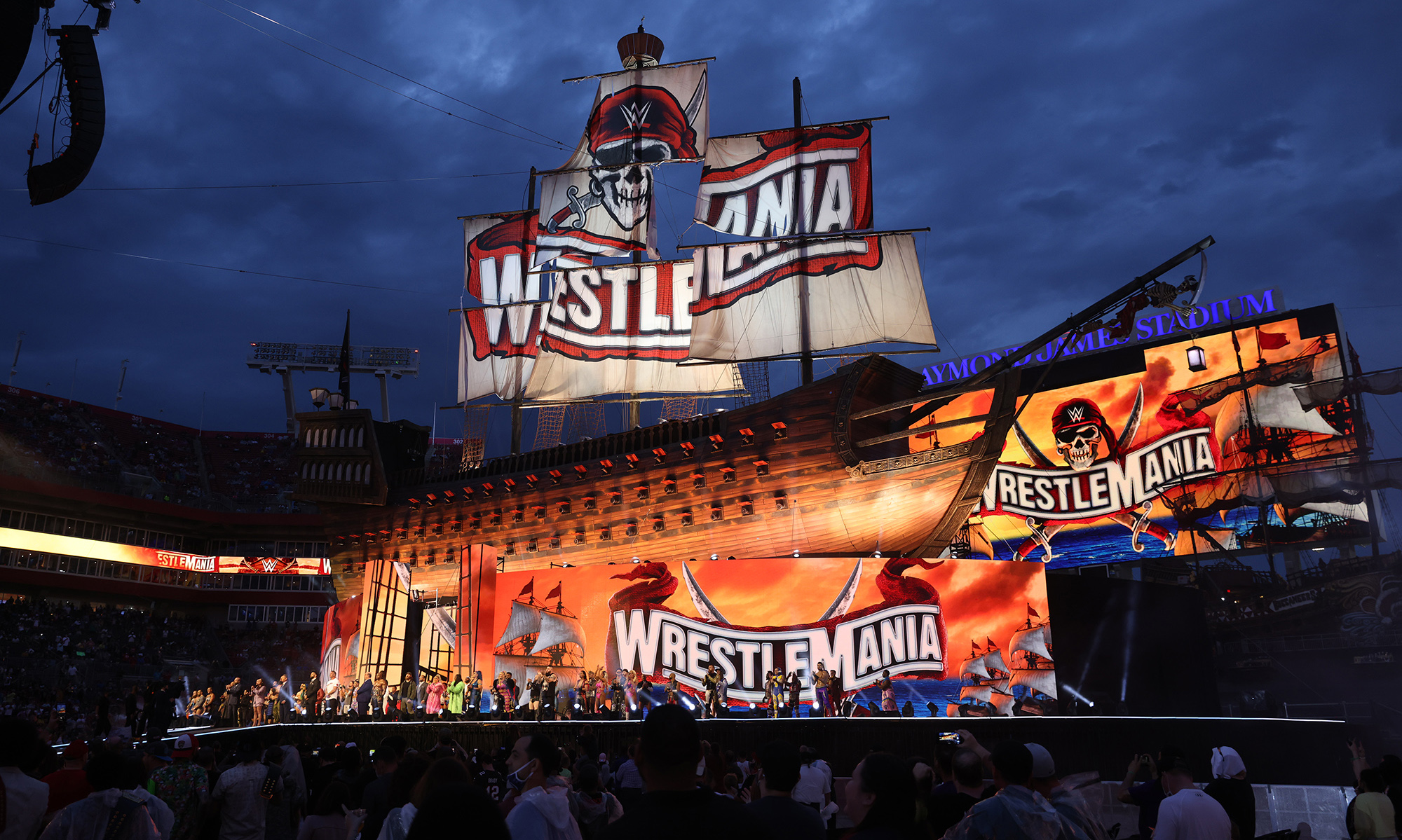
WWE’s main set piece at WrestleMania centered on the famous pirate ship inside Raymond James Stadium.
WrestleMania 37 marked the culmination of a frenetic couple of weeks for WWE. In addition to the massive setup at Raymond James Stadium, WWE loaded out of its Thunderdome residency at Tropicana Field in St. Petersburg, FL, and loaded into USF’s Yuengling Center in Tampa, where the third Thunderdome iteration kicked off last night for WWE Raw. We loaded into Raymond James Stadium. On top of that, WWE supported a two-night takeover of the NXT brand in Orlando on Wednesday and Thursday (one night on Peacock and USA, the other exclusively on Peacock).
“There were a lot of moving parts,” says Leslie. “Obviously, at all of those locations, we also had to maintain our medical protocol of testing and screening. So, outside of just Mania of this year, there were a lot of logistics involved. We couldn’t do it without the great staff, vendors, and freelancers that we have, and I leaned heavily on other supervisors to keep all those different venues on track.”
AR Takes on Major Role at WrestleMania 37
The most notable technological addition to this year’s production was WWE’s extensive use of augmented reality throughout the broadcast. Three cameras — a high 50-yard-line angle, an end-zone angle, and a mobile jib on the floor — were outfitted with AR systems based on Brainstorm software and stYpe camera-tracking systems.
“This year, instead of adding a lot of extra cameras [the way] we normally do — helicopters, Spider Cam, and all that — we decided to lean more heavily on upgrading our AR presence,” says Leslie. “AR has such a great pop to it creatively, so that really helped us brand the arena in a new and very potent way.
“And, with socially distanced fans,” he adds, “we wanted to ensure that there weren’t spots that didn’t look full. With AR, we could bring the whole bowl alive with our messaging — on top of all the fans that were in attendance in person.”
Although AR played an integral role in the look of this year’s broadcast, it would be WrestleMania without eye-popping stages and set pieces. Not surprisingly, WWE opted to center this year’s design on the famous pirate ship inside Raymond James Stadium with a main set piece longer than an NHL hockey rink.
“The cornerstone of the design motif was the pirate ship,” says Leslie, “which was loaded with pyrotechnics and really impressive.”
WWE also rolled out 10 semis full of LED product to create the in-stadium experience, using it both for staging and around the stadium to make the bowl look as full as possible despite the reduced capacity.
Upgraded NEP Trucks Serve as Familiar Home for WWE
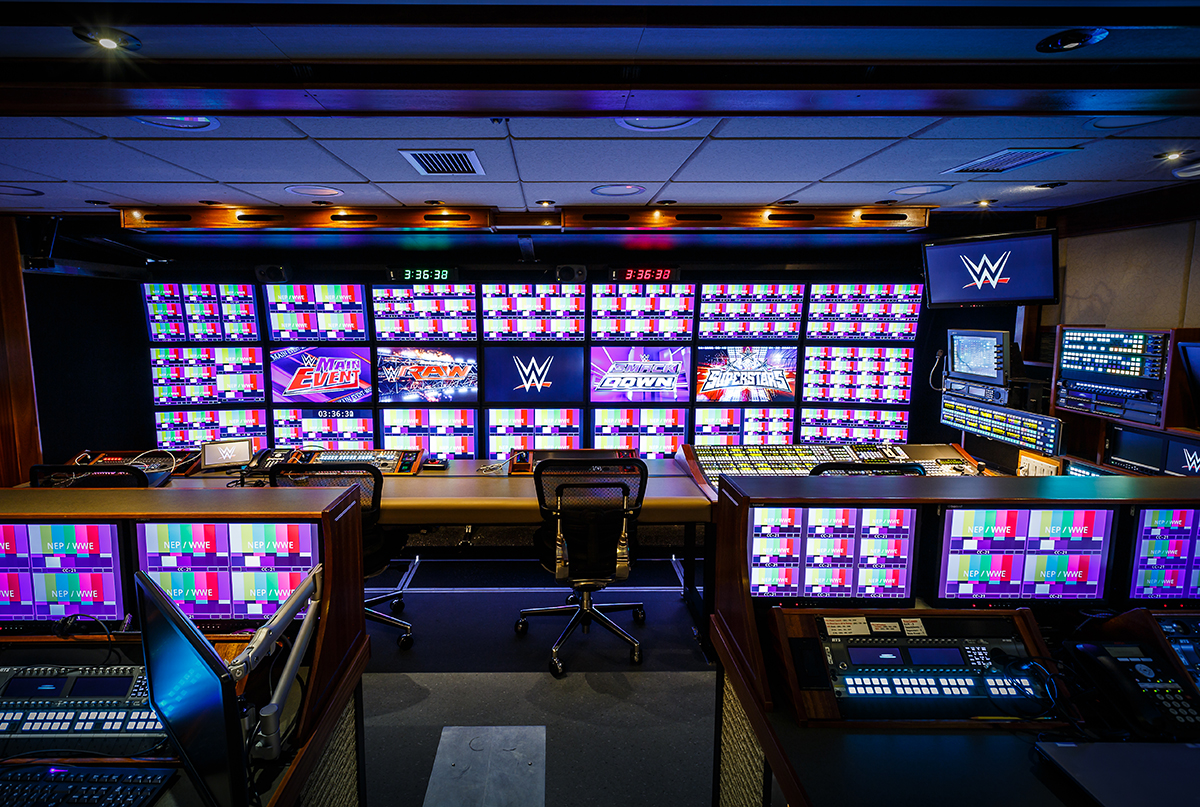
WWE deployed its dedicated IP-based mobile units – NEP WWE 1, 2, and 3 trucks — at Raymond James Stadium to drive the show.
Dedicated IP-based mobile units — NEP WWE 1, 2, and 3 trucks — were rolled out at Raymond James Stadium to drive the show. Last month, WWE worked with NEP to upgrade all replay systems to EVS XT VIA production servers and all broadcast cameras to Sony HDC-5500’s. Although WWE deployed roughly the same camera complement for a Raw production, it created plenty of flexibility with 50 camera drops throughout the stadium.
“We’re really good at hoofing it and making it look like we have a lot more cameras than we do with all those drops,” says Leslie. “Also, this was the first Mania where we used our new 5500’s, and we really saw a difference because they’re so quiet. I think it helped enhance the product. And the new XT VIA’s gave us a huge upgrade in terms of speed and multiple access, so that also helped with the internal workflow.”
WWE deployed 300 synchronized drones for the always dramatic WrestleMania talent entrances.
All WWE shows are extremely audio-intensive, given the various production elements involved in the show and the large number of crew that have to be integrated into the comms infrastructure. This was particularly true for WWE’s biggest production of the year: WrestleMania had a whopping 2.9 million Dante audio crosspoints.
Inclement weather wreaked havoc during the two-day event, but WWE experienced minimal delays to the actual WrestleMania programming.
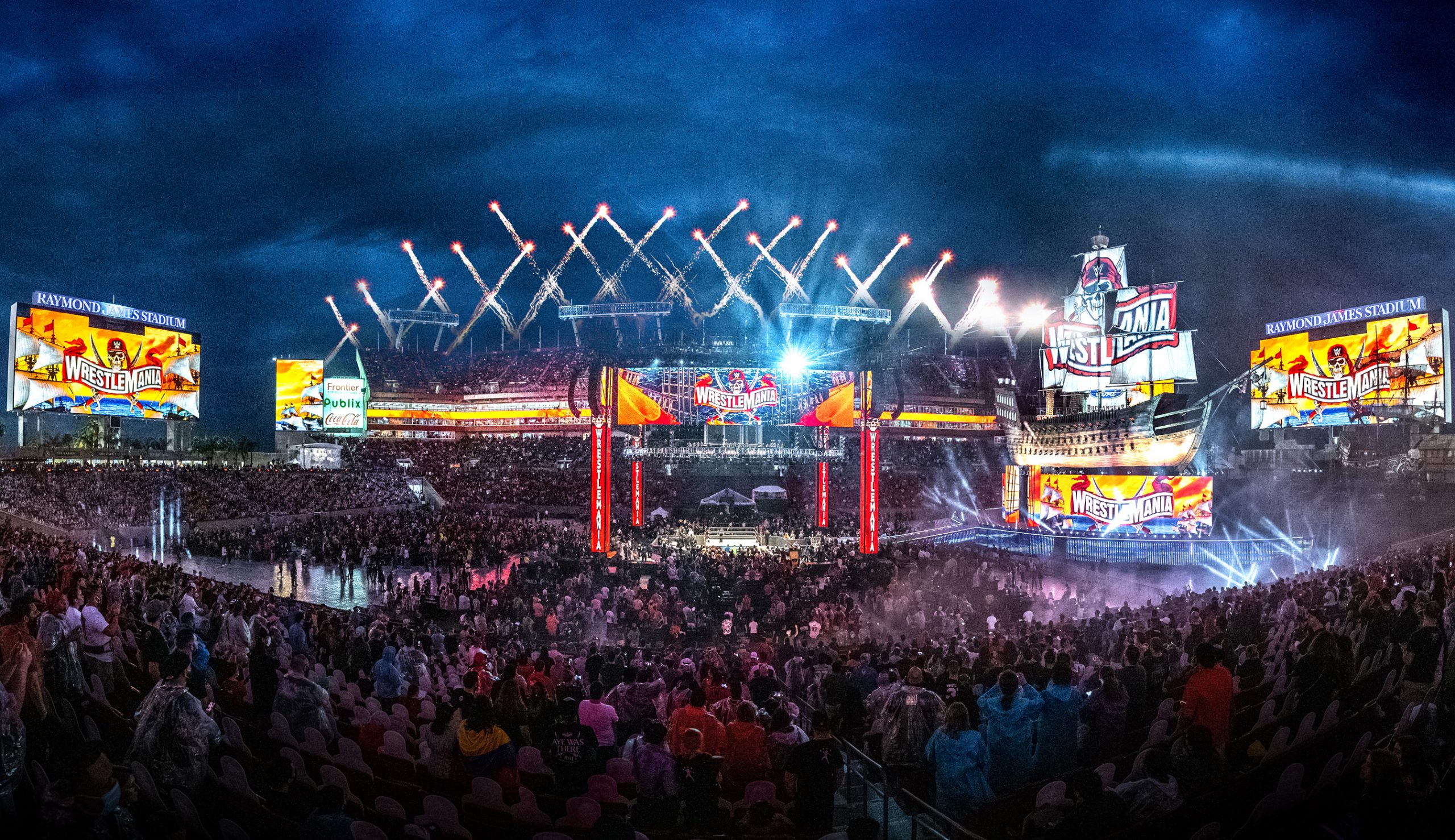
A sellout of 25,675 fans (with reduced-capacity rules in place) attended WrestleMania on Saturday and Sunday, totaling 51,350 overall.
“The weather was obviously a wildcard, but we got lucky that the bulk of our downtime due to storms was before the event,” says Leslie. “The first night, we had about half an hour of a delay, and then, magically, we were able to start with a show. Yesterday, it rained all day right up until showtime, and we were able to stay pretty much on time. Obviously, some gear was compromised due to the severe nature of the wind and water, but it didn’t really affect us since we had spares for anything that was taken out of action.”
In terms of safety protocols, all WWE personnel — from talent to stagehands — were required to pass COVID-19 tests prior to arriving at the venue and to complete a temperature screening and questionnaire upon arrival at the stadium.
No Rest for the Weary: WWE Train Keeps Rolling With New Thunderdome
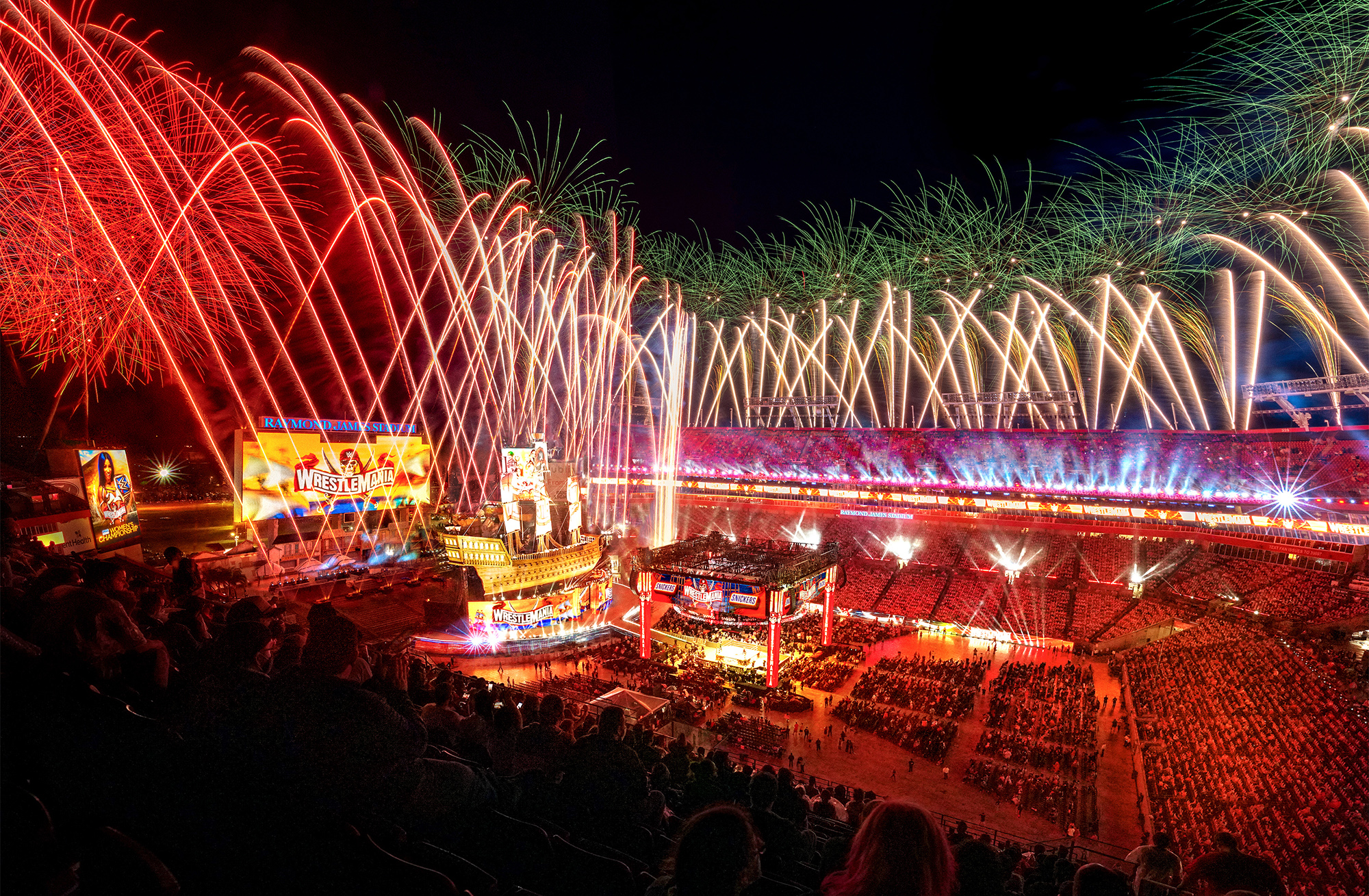
As always, WWE deployed plenty of LED and pyro to create a one-of-a-kind fan experience at WrestleMania.
Last night, WWE’s third Thunderdome set debuted on Raw from the Yuengling Center. The third iteration, after the Thunderdome sets at Orlando’s Amway Center and Tampa’s Tropicana Field – is once again deploying an assortment of LED displays from NEP Screenwork and is using the virtual fan integration created by The Famous Group.
“It’s really impressive and fairly analogous to what you’ve seen in past [Thunderdomes],” says Leslie. “We made a few creative changes and needed to shift a few things around due to the different sizes of the buildings, but, at this point, that workflow is pretty seamless, and we’re really comfortable with it. We’re looking forward to when the world opens up and we can start touring again because that’s what we’re truly built for here.”
